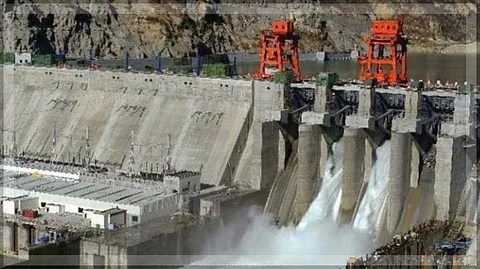

India was probably counting its chickens too early when the 54-month diplomatic standoff with China in Ladakh came to an end in October. Both countries engaged in intense backroom discussions and finally it was announced that the forces on both sides of the border would go back to their pre-2020 patrolling positions. Apart from this, the two nations also promised, among other things, to share information about trans-border rivers.
After the diplomatic fiascos with Bangladesh and Canada, if South Block mandarins were feeling relieved that there was something to be happy about on the 2024 calendar, that joy was short-lived. Less than two months after the easing of tensions, China has announced the much-talked-about and controversial dam on the Yarlung Tsangpo river, which is known as the Brahmaputra after it enters India. Touted to be the world’s largest hydropower project, the dam has already raised multiple concerns about the impact on the environment in countries all around. So much for sharing information on trans-border rivers.
For Indian authorities, this dam across the Yarlung Tsangpo should be a cause for worry for multiple reasons. The Yarlung Tsangpo/ Brahmaputra flows through a fragile ecological area, which is both economically backward and extremely remote. Because of the mountainous nature of the entire region, and the tight grip that China keeps on Tibet, there is little outside understanding of how the coming up of the dam in the area will impact the indigenous people of eastern Tibet. The area also falls within a high-activity seismic zone, and the Northeast has seen devastating earthquakes in its recent history. So there is much cause for worry.
A much bigger question is what China will do once the dam is built and it has absolute control over the waters of the river. No date has been announced for the completion of the dam, but the Tsangpo/ Brahmaputra is the lifeline of the entire region, and controls irrigation and farming for millions across India and Bangladesh. It is an infamously unpredictable river and can change its course and flow depending on the rainfall, which again is among the heaviest in the world in the monsoon months. The Brahmaputra regularly floods in banks across Assam in the months of rain. For a river that is so untameable, whether the effort to tame it will spell doom for millions is a question on many minds.
In this complex mix of environmental and ecological issues, what will cause creased brows for Indian diplomats is the fact that the Tsangpo, once it leaves Tibet, flows into Arunachal Pradesh, where it is called the Siang, before it becomes Brahmaputra on entering Assam. Arunachal is a proverbial red flag for India-China relations, since China disputes India’s sovereignty over the state and has consistently claimed it as part of Tibet. Going ahead, if the release of waters from the dam proves to be a contentious issue and leads to flooding and other tragedies in Arunachal, India may find it very difficult to start a dialogue with our intractable neighbour on the matter. Conservationists have already predicted that the dam will adversely impact the flora and fauna of the region, and Arunachal, which is blessed with amazing biodiversity, may have to cope with the effects of what the dam unleashes.
While China is touting the dam as a scientific wonder, which is supposed to generate 300 billion kilowatt-hours of power annually, its own history of dam-building is not without criticism. The Three Gorges dam on the Yangtze river, which is currently the largest dam in the world and is so big that it has actually slowed down the earth’s rotation, generates about 90 billion kilowatt-hours of power a year, a figure which the Tsangpo dam will cross by more than three times. The Three Gorges dam, built between 1994 and 2003, led to the reported displacement of about 1.4 billion people. While Tibet is a much more sparsely populated region, the ecological impact of the dam could be
far bigger.
With reference to the dam project, the path ahead for India will be a tightrope walk. China does not have a great record of listening to neighbours’ concerns when it comes to matters within its own territorial control. India itself has multiple hydel projects on the drawing board for Arunachal, which have seen large-scale protests across the hilly state. So the authorities would find it difficult to criticise China’s dam-building ambitions, when it has its own goals in the same department. However, the ecological impact of the project would affect every nation through which the river flows, and there is a crying need for everyone to assess the project’s impact before it is too late.